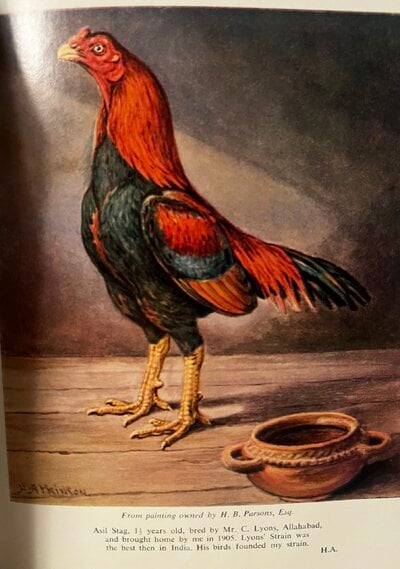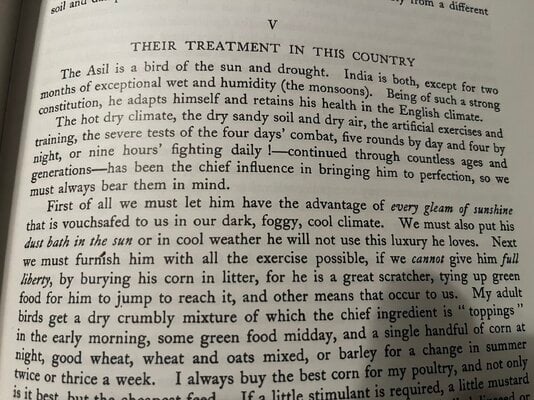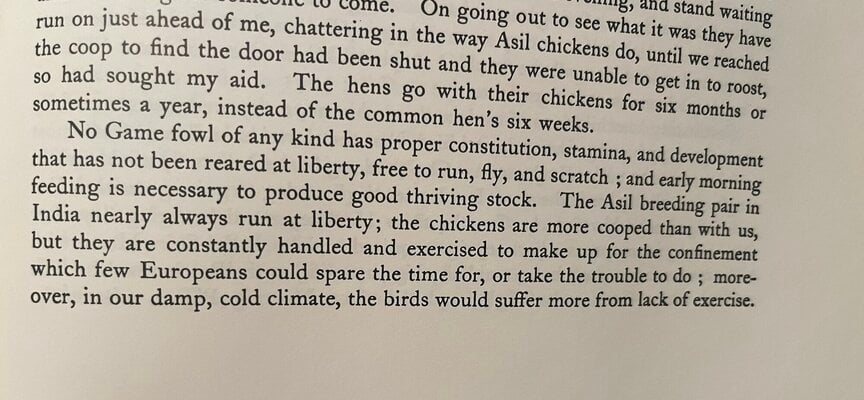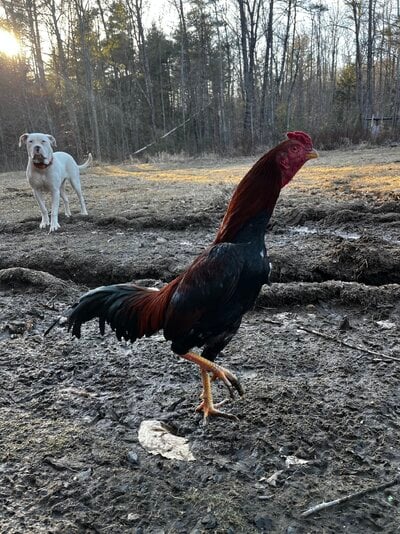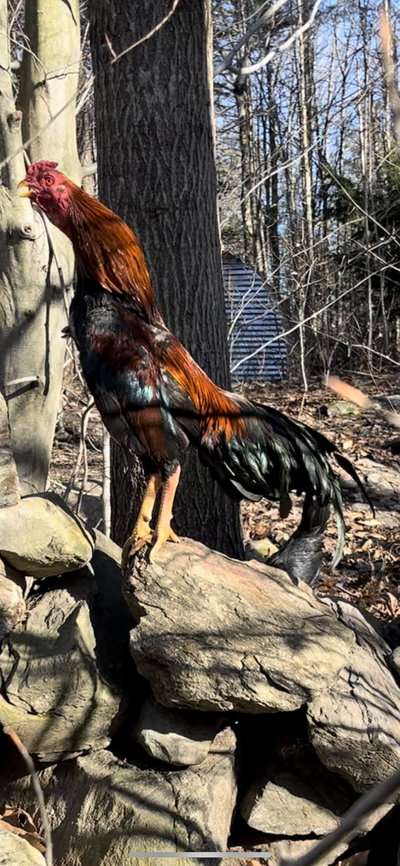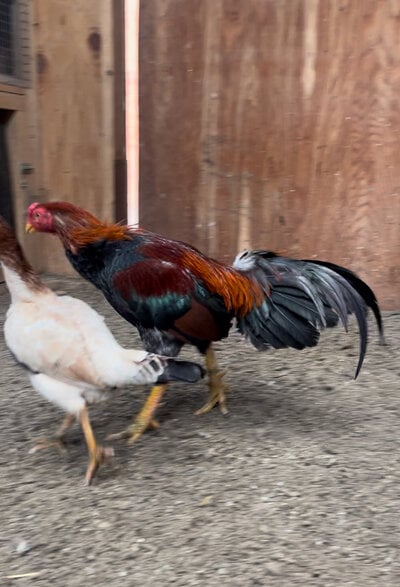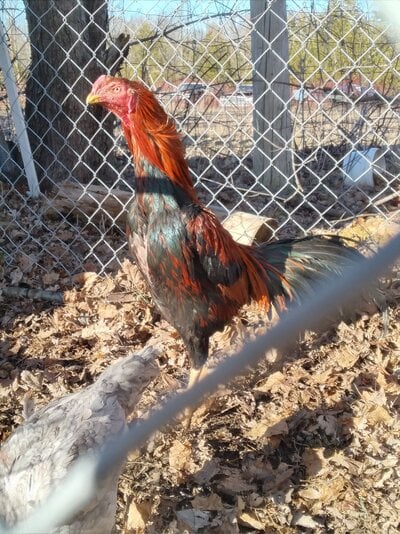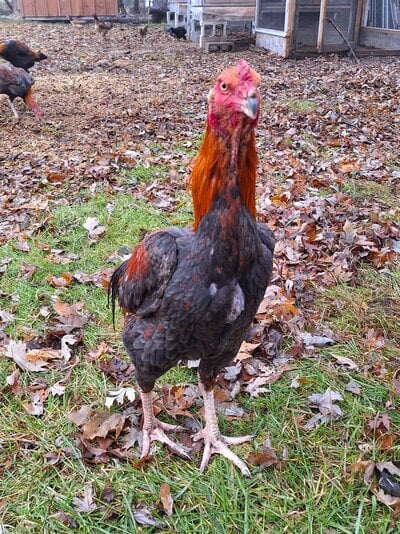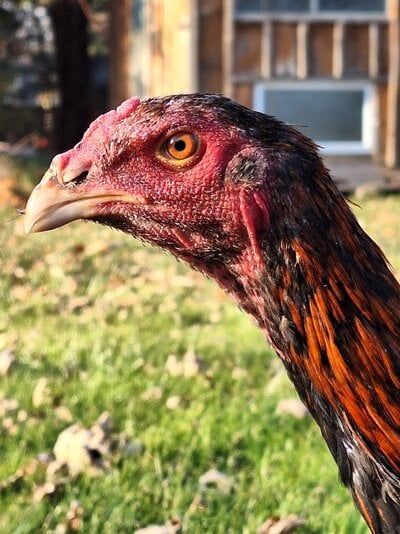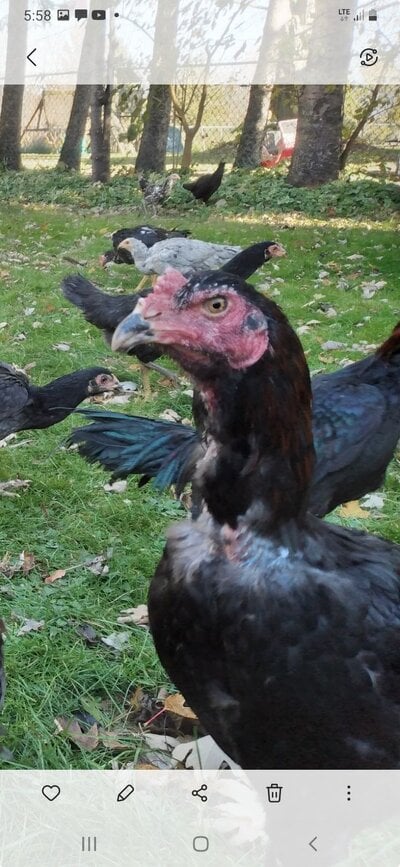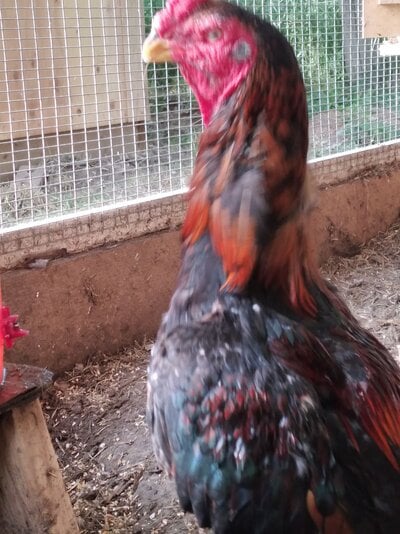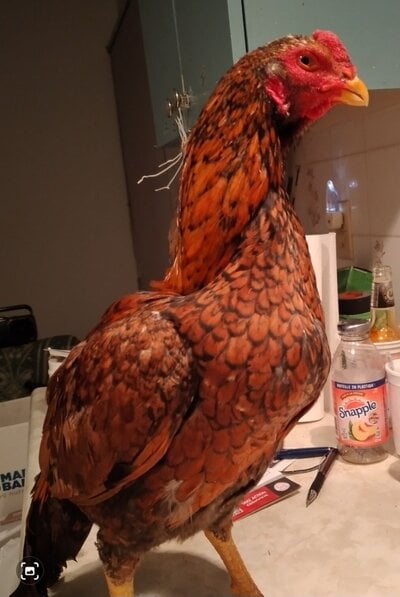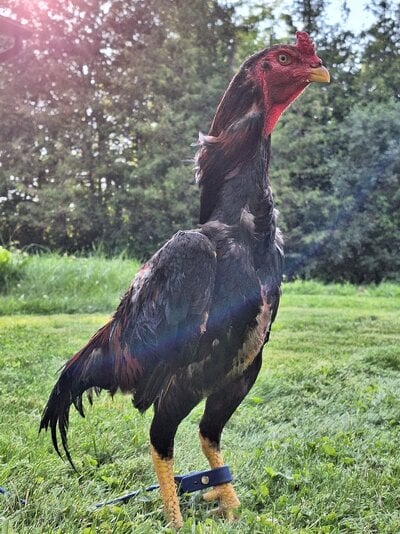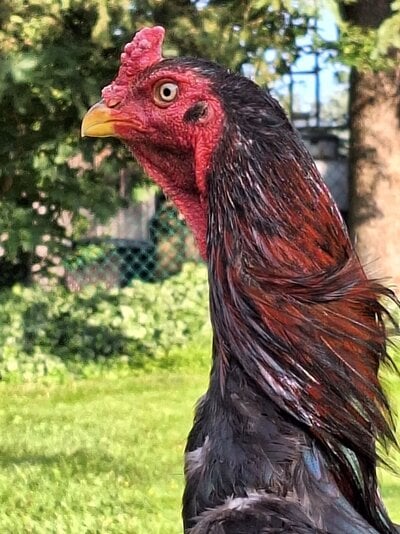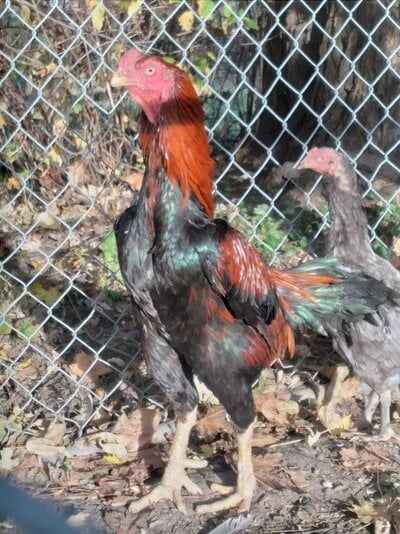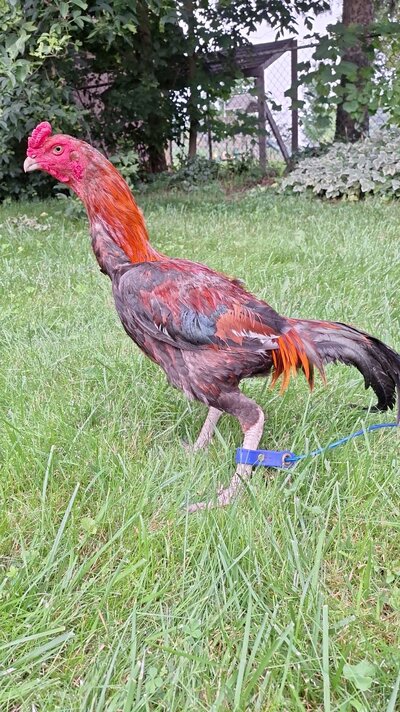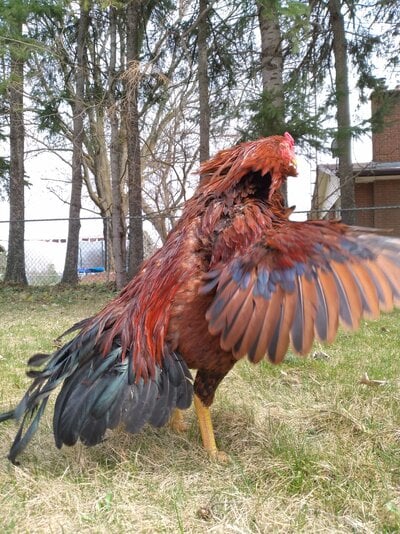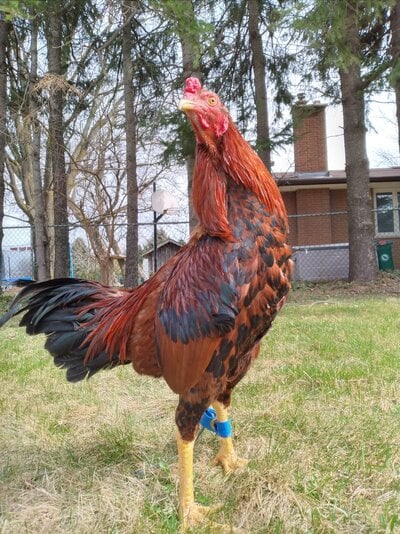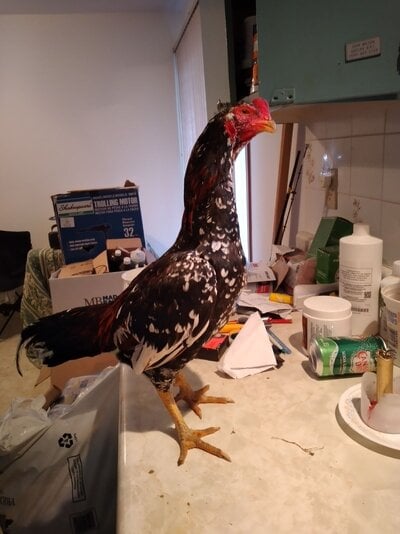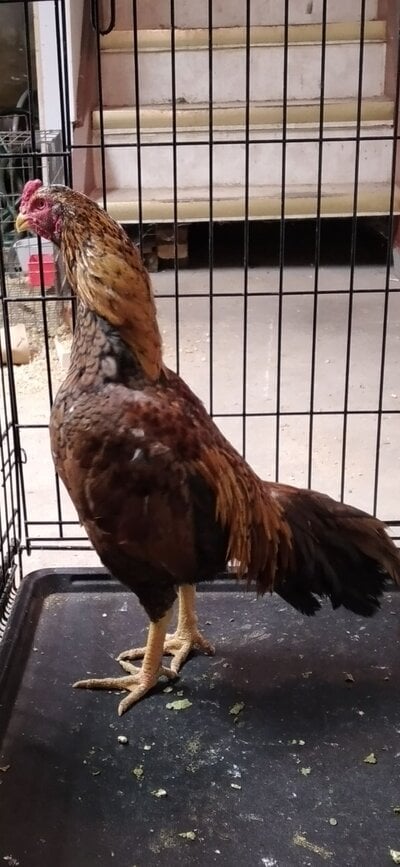We have maintained them for over 13 centuries. My bloodlines duty.If I am not mistaken, there is a Pakistani - American breeder in Virginia, his fowl seem to be of Pakistan directly as he is originally from there and travels back. His fowl are distinctive, understandably so.
American Asils have a 137 year history of importations, travel up and down the Atlantic Seaboard, then out west to California and back East, becoming established in Middle America, all the while what survived arduous tests and trials was obviously perpetuated and blended. Of course breeders were (and still are) concerned with form, function and performance, otherwise they are not gamefowl. The original asils imported to the US were the small Reza type for a reason.
Some breeders prefer them taller and larger around 7-8lbs, some prefer them closer to 4 lbs. This type of variation always existed, based on one’s selection, style, not to mention environment.
If you read work by Mr. H. Atkinson, he describes the best in his opinion but also in the opinion of the Indian breeders he met while living in India. They were the smaller asils, because of style (and maybe social circles/status). Mr. Atkinson is who facilitated the early importations to American breeders like Dr. H. P. Clarke in 1887, Mr. McCoy, Mr. Graves, Mr. E. A. Wheeler (1910-1930s). According to Mr. C. A. Finsterbush, they were ‘Rajah Murgh’, mostly from in and around Lucknow. Greys, light and dark reds and black Asil were imported from Lahore and Rampur also. Mr. C. A. Finsterbusch writes about this history, and some of the various strains in their homeland, but what made an impression on the American roostermen and their fowl were the 4 to 5 pound Asil. No one should wonder too hard on where the pea comb trait among American Gamefowl derived.
Also, Mr. Manuel Reynolds was breeding ‘Atkinson Asil’ since 1947. Once he got the imported Desi Asil in the 1960s, they became the foundation. Having said this, he bred the Atkinson blood in twice before Mr. C. Hanson got them.
Despite what can be read by Dr. Everett on feathersite, Manuel Reynolds did not have Hyderabad Asil.
I’ve spoke with Mr. C. Hanson, he imported the Hyderabad Asil fowl (as we know them here), not Mr. Reynolds. This does not means that all ‘Reynolds Asil’ have the Hyderabad Asil blood in them, what it does mean however, is that all ‘Hyderabad Asil’ here in the US (if from the various American Asil families up to this point of the shared history) likely have the Desi Asil blood (along with Atkinson and likely ‘Kaptan’ blood) as a foundation.
Folks still maintain and breed correctly, the old Asil blood, but the climate, properties in the soil, feed, severe winters, various styles, all made them different than how they were the previous centuries and beyond in Punjab and Sindh.
I agree with you on the hydrabad imported by hanson.
Breeding correctly by their own standards yes, but true to type from centuries ago like the Maharajas did, only few have that practice.

